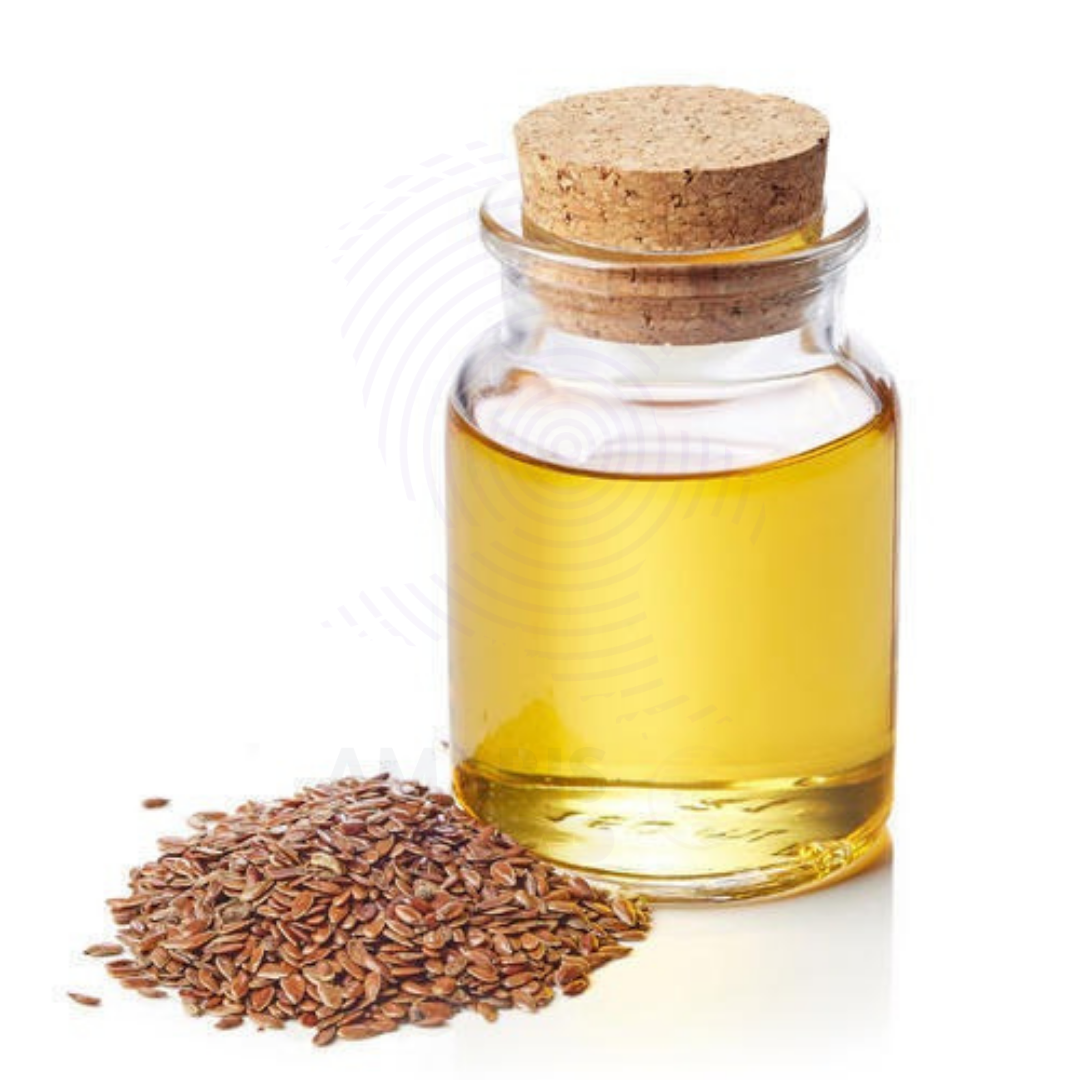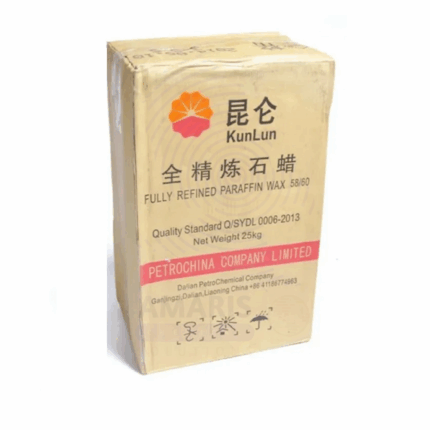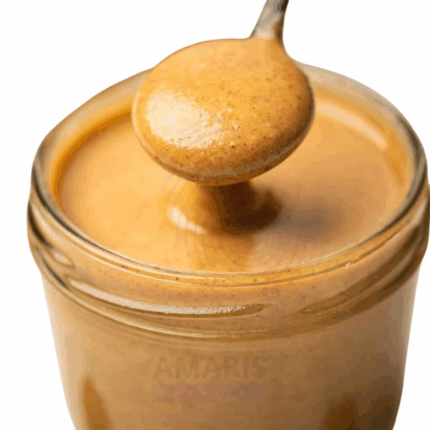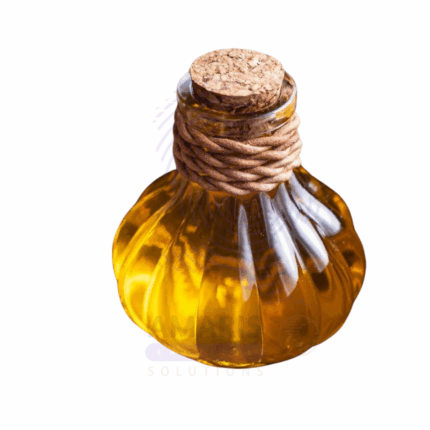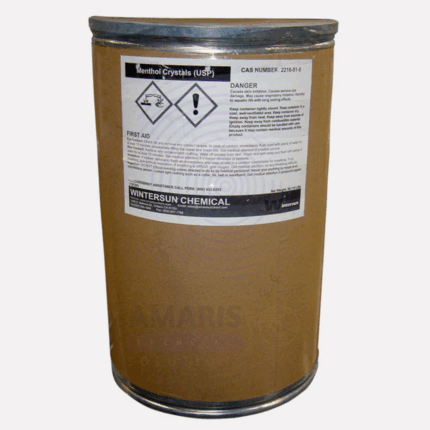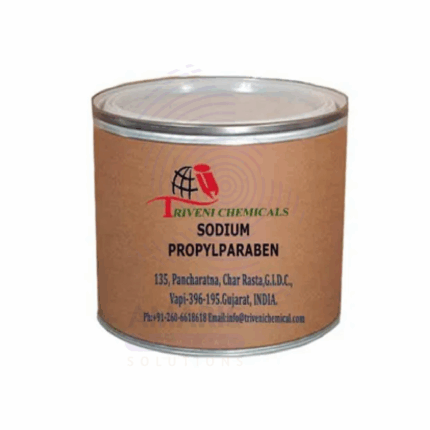Ambrette Seed Oil
Ambrette Seed Oil is a rare, aromatic essential oil derived from the seeds of the Abelmoschus moschatus plant. Known for its rich, musky, slightly sweet, and floral scent, Ambrette Seed Oil is often considered a botanical alternative to animal-derived musk. It is widely prized in high-end perfumery, natural cosmetic formulations, and aromatherapy for its warm, sensual, and long-lasting aroma.
This oil is rich in ambrettolide and farnesol, compounds that lend it a delicate musky note without the synthetic harshness of artificial musks. Ambrette Seed Oil is non-toxic and safe for topical use when diluted, making it ideal for fine fragrances, massage oils, and therapeutic blends.
Ambrette Seed Oil
Primary Uses
Cosmetics and Personal Care
- Used in luxury perfumes and colognes as a base note with musky, warm, and slightly fruity nuances.
- Added to natural deodorants, body sprays, and roll-ons for subtle fragrance enhancement.
- Included in skin creams, lotions, and balms to provide a mild, lingering scent.
- Incorporated into beard oils and aftershaves for its soft, grounding aroma.
- Used in hair oils and styling creams for aromatic conditioning benefits.
Aromatherapy
- Valued for its calming and grounding effects; used in stress-relief and emotional balance blends.
- Often blended with floral and citrus oils in diffuser formulas for sensual relaxation.
- Applied in massage oils to enhance emotional comfort and promote well-being.
- Used in meditation and spiritual blends for its deep, centering fragrance.
High-End Perfumery
- A key fixative in natural perfumery, helping other scents last longer.
- Frequently used in oriental, chypre, and fougère fragrance families.
- Combines well with jasmine, rose, sandalwood, vetiver, and citrus oils for complex accords.
Secondary Uses
Natural Deodorants and Balms
- Used in formulations where synthetic fragrances are avoided.
- Provides mild antibacterial and scent-masking qualities.
Soap and Artisan Product Formulations
- Added to luxury soaps and body bars for a unique and elegant scent.
- Used in solid perfumes and wax-based balms.
Pet Care and Niche Applications
- Occasionally used in premium pet grooming products (in low, safe concentrations) for natural scent enhancement.
Basic Identification Attributes
- Botanical Source: Abelmoschus moschatus
- Common/Trade Name: Ambrette Seed Oil
- INCI Name: Abelmoschus Moschatus Seed Oil
- CAS Number: 8015-62-1
- HS Code: 3301.29
- Synonyms: Musk Mallow Oil, Musk Seed Oil
Physical & Chemical Properties
- Physical State: Liquid
- Color & Odor: Pale yellow to amber; musky, sweet, floral aroma
- Solubility: Insoluble in water; soluble in alcohol and fixed oils
- Refractive Index: 1.475 – 1.495
- Specific Gravity: 0.910 – 0.945
- Main Components: Ambrettolide, farnesol, methyl esters
Safety & Hazard Attributes
- GHS Classification: Not classified as hazardous
- Toxicity: Non-toxic under normal cosmetic use; avoid high concentrations undiluted
- Allergen Information: Generally well-tolerated; perform patch testing before direct application
- Exposure Limits: Not established
Storage & Handling Attributes
- Storage Conditions: Store in a cool, dry, and dark area away from heat and air exposure
- Container Type: Amber glass or aluminum bottles to prevent oxidation
- Shelf Life: 2–3 years when properly stored
- Handling Precautions: Keep tightly sealed; avoid contamination with water or other materials
Regulatory & Compliance Attributes
- Compliant with IFRA usage guidelines for fragrance materials
- Approved for cosmetic use under global regulatory frameworks (EU, FDA, etc.)
- Suitable for natural and vegan product lines
- Not intended for ingestion or therapeutic claims without medical oversight
Environmental & Health Impact
- Biodegradability: Biodegradable
- Ecotoxicity: Low environmental impact when used in typical concentrations
Bioaccumulation: Not expected
Safety Handling Precautions
- PPE Required: Gloves and goggles recommended during bulk handling
- Handling Guidelines: Work in well-ventilated areas; dilute properly before use
First Aid Measures
- Inhalation: Move to fresh air if overexposed
- Skin Contact: Wash with soap and water if irritation occurs
- Eye Contact: Flush with clean water for several minutes
- Ingestion: Not intended for ingestion; seek medical advice
Firefighting Measures
- Fire Hazards: Flammable liquid
- Extinguishing Media: Foam, dry chemical, or CO₂
- Special Precautions: Use protective equipment; avoid breathing combustion fumes
Hazardous Combustion Products: Carbon oxides


 Acidulants
Acidulants Antioxidants
Antioxidants Nutraceutical Ingredients (food)
Nutraceutical Ingredients (food)
 Collectors
Collectors Dust Suppressants
Dust Suppressants Explosives and Blasting Agents
Explosives and Blasting Agents Flocculants and Coagulants
Flocculants and Coagulants Frothers
Frothers Leaching Agents
Leaching Agents pH Modifiers
pH Modifiers Precious Metal Extraction Agents
Precious Metal Extraction Agents
 Antioxidants(plastic)
Antioxidants(plastic) Colorants (Pigments, Dyes)
Colorants (Pigments, Dyes) Fillers and Reinforcements
Fillers and Reinforcements Flame Retardants
Flame Retardants Monomers
Monomers Plasticizers
Plasticizers Polymerization Initiators
Polymerization Initiators Stabilizers (UV, Heat)
Stabilizers (UV, Heat)
 Antifoaming Agents
Antifoaming Agents Chelating Agents
Chelating Agents Coagulants and Flocculants
Coagulants and Flocculants Corrosion Inhibitors
Corrosion Inhibitors Disinfectants and Biocides
Disinfectants and Biocides Oxidizing Agents
Oxidizing Agents pH Adjusters
pH Adjusters Scale Inhibitors( water)
Scale Inhibitors( water)
 Antioxidants(cosmetic)
Antioxidants(cosmetic) Emollients
Emollients Fragrances and Essential Oils
Fragrances and Essential Oils Humectants
Humectants Preservatives
Preservatives Surfactants(cosmetic)
Surfactants(cosmetic) Thickeners
Thickeners UV Filters
UV Filters
 Fertilizers
Fertilizers Soil Conditioners
Soil Conditioners Plant Growth Regulators
Plant Growth Regulators Animal Feed Additives
Animal Feed Additives Biostimulants
Biostimulants Pesticides (Herbicides, Insecticides, Fungicides)
Pesticides (Herbicides, Insecticides, Fungicides)
 Active Pharmaceutical Ingredients (APIs)
Active Pharmaceutical Ingredients (APIs) Excipients
Excipients Solvents(pharmaceutical)
Solvents(pharmaceutical) Antibiotics
Antibiotics Antiseptics and Disinfectants
Antiseptics and Disinfectants Vaccine Adjuvants
Vaccine Adjuvants Nutraceutical Ingredients (pharmaceutical)
Nutraceutical Ingredients (pharmaceutical) Analgesics & Antipyretics
Analgesics & Antipyretics
 Analytical Reagents
Analytical Reagents Chromatography Chemicals
Chromatography Chemicals Spectroscopy Reagents
Spectroscopy Reagents Molecular Biology Reagents
Molecular Biology Reagents Biochemical Reagents
Biochemical Reagents Inorganic and Organic Standards
Inorganic and Organic Standards Laboratory Safety Chemicals
Laboratory Safety Chemicals Specialty Laboratory Chemicals(Special Laboratory Equipment)
Specialty Laboratory Chemicals(Special Laboratory Equipment)
 Demulsifiers
Demulsifiers Hydraulic Fracturing Fluids
Hydraulic Fracturing Fluids Scale Inhibitors(oil)
Scale Inhibitors(oil) Surfactants(oil)
Surfactants(oil) Drilling Fluids
Drilling Fluids
 Dyes and Pigments
Dyes and Pigments Bleaching Agents
Bleaching Agents Softening Agents
Softening Agents Finishing Agents
Finishing Agents Antistatic Agents
Antistatic Agents
 Admixtures
Admixtures Waterproofing Agents
Waterproofing Agents Sealants and Adhesives
Sealants and Adhesives Curing Compounds
Curing Compounds Concrete Repair Chemicals
Concrete Repair Chemicals Anti-Corrosion Coatings
Anti-Corrosion Coatings
 Surfactants(cleaning)
Surfactants(cleaning) Builders
Builders Enzymes
Enzymes Solvents (Cleaning)
Solvents (Cleaning) Fragrances
Fragrances
 Electronic Chemicals
Electronic Chemicals Catalysts
Catalysts Lubricants
Lubricants Photographic Chemicals
Photographic Chemicals Refrigerants
Refrigerants Automotive chemicals
Automotive chemicals Pyrotechnic Chemicals
Pyrotechnic Chemicals
 Biodegradable Surfactants
Biodegradable Surfactants Bio-based Solvents
Bio-based Solvents Renewable Polymers
Renewable Polymers Carbon Capture Chemicals
Carbon Capture Chemicals Wastewater Treatment Chemicals
Wastewater Treatment Chemicals
 Pigments
Pigments Solvents(paint)
Solvents(paint) Specialty Coatings
Specialty Coatings Binders/Resins
Binders/Resins Additives
Additives Driers
Driers Anti-Corrosion Agents
Anti-Corrosion Agents Functional Coatings
Functional Coatings Application-Specific Coatings
Application-Specific Coatings
 Fresh Herbs
Fresh Herbs Ground Spices
Ground Spices Whole Spices
Whole Spices Spice Blends
Spice Blends Dried Herbs
Dried Herbs
 Leavening Agents
Leavening Agents Dough Conditioners
Dough Conditioners Flour Treatments
Flour Treatments Fat Replacers
Fat Replacers Decoratives
Decoratives Preservatives(baking)
Preservatives(baking)
 Plasticizers & Softeners
Plasticizers & Softeners Reinforcing Agents
Reinforcing Agents Adhesion Promoters
Adhesion Promoters Vulcanizing Agents
Vulcanizing Agents Antidegradants
Antidegradants Blowing Agents
Blowing Agents Fillers & Extenders
Fillers & Extenders Accelerators & Retarders
Accelerators & Retarders